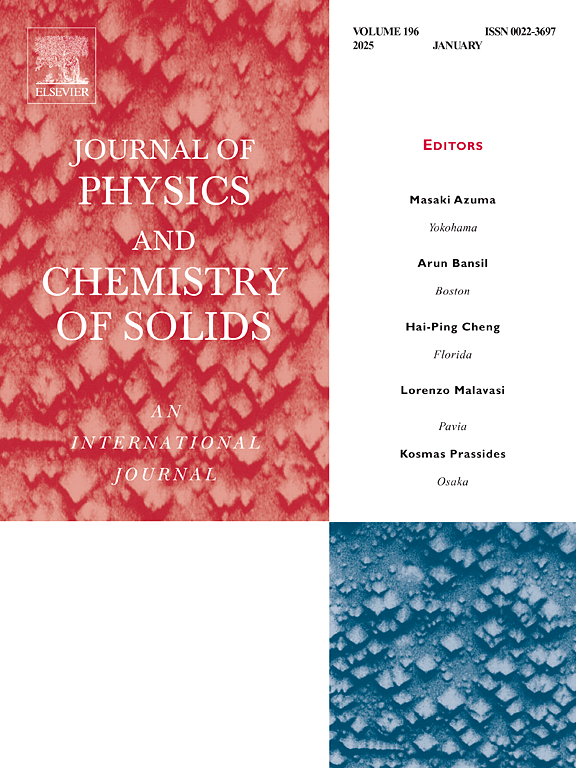Enhanced ionic conductivity via oxygen-vacancies-enriched Na3Zr2Si2PO12 for PEO-based composite solid electrolytes
IF 4.9
3区 材料科学
Q2 CHEMISTRY, MULTIDISCIPLINARY
引用次数: 0
Abstract
The high ionic conductivity and cycling stability of solid electrolytes are crucial for the application of all-solid-state sodium batteries (ASSSBs). In this study, a PEO-based composite polymer solid electrolyte (CPE) with improved ionic conductivity was prepared by incorporating oxygen-vacancy-enriched Na3Zr2Si2PO12 (OVNZSP). It was discovered that the presence of oxygen vacancies on the surface of the NZSP filler can promote the dissociation of sodium salts in the electrolyte and decrease the crystallinity of PEO, resulting in the effective conduction of Na+. Consequently, there is a significant enhancement in the ionic conductivity of the electrolyte, reaching 5.28 × 10−4 S cm−1 at 60 °C. Furthermore, the substantially optimized Na+ transport facilitates the CPE maintaining superior electrochemical performance at high current densities. The ASSSBs assembled using OVNZSP-incorporated CPE exhibit excellent cycle stability, with a capacity retention of 85 % at a current density of 1C after 800 cycles. This method offers a promising strategy for enhancing the ionic conductivity of solid-state electrolyte and optimizing ASSSBs.
富氧Na3Zr2Si2PO12增强peo基复合固体电解质的离子电导率
固体电解质的高离子电导率和循环稳定性对全固态钠电池的应用至关重要。在本研究中,通过加入富氧空位Na3Zr2Si2PO12 (OVNZSP),制备了离子电导率提高的peo基复合聚合物固体电解质(CPE)。研究发现,在NZSP填料表面存在氧空位,可以促进电解质中钠盐的解离,降低PEO的结晶度,导致Na+的有效传导。因此,电解质的离子电导率显著增强,在60°C时达到5.28 × 10−4 S cm−1。此外,经过优化的Na+输运有助于CPE在高电流密度下保持优异的电化学性能。使用含有ovnzsp的CPE组装的assb具有出色的循环稳定性,在1C电流密度下,800次循环后容量保持率为85%。该方法为提高固态电解质的离子电导率和优化asssb提供了一种有前途的策略。
本文章由计算机程序翻译,如有差异,请以英文原文为准。
求助全文
约1分钟内获得全文
求助全文
来源期刊
CiteScore
7.80
自引率
2.50%
发文量
605
审稿时长
40 days
期刊介绍:
The Journal of Physics and Chemistry of Solids is a well-established international medium for publication of archival research in condensed matter and materials sciences. Areas of interest broadly include experimental and theoretical research on electronic, magnetic, spectroscopic and structural properties as well as the statistical mechanics and thermodynamics of materials. The focus is on gaining physical and chemical insight into the properties and potential applications of condensed matter systems.
Within the broad scope of the journal, beyond regular contributions, the editors have identified submissions in the following areas of physics and chemistry of solids to be of special current interest to the journal:
Low-dimensional systems
Exotic states of quantum electron matter including topological phases
Energy conversion and storage
Interfaces, nanoparticles and catalysts.

 求助内容:
求助内容: 应助结果提醒方式:
应助结果提醒方式:


